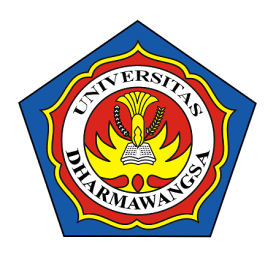Analisis klasifikasi Algoritma K-Nearest Neighboar (K-NN) pada struktur Daerah di Kota Medan
DOI:
https://doi.org/10.70340/jirsi.v4i2.165Kata Kunci:
KNN Algorithm, Regional Structure, Classification, Medan City, Spatial PlanningAbstrak
This research aims to analyze the application of the K-Nearest Neighbor (K-NN) algorithm in classifying regional structures in Medan City. Medan, one of the largest cities in Indonesia, has a variety of characteristics of regional structure that requires an appropriate analysis approach for spatial management and spatial planning. The K-NN algorithm was chosen because of its ability to categorize data based on its proximity to other data points, which is very suitable for the needs of spatial planning and management. other data points, which is very suitable for the needs of regional classification analysis. In this research, the data used includes various attributes of the regional structure such as structure attributes such as population density, land use, and infrastructure in each sub-district. infrastructure in each sub-district in Medan City. In this research, the method used is statistical data processing statistical data processing to group areas with similar characteristics, applying the K-NN algorithm to categorize method. The classification process process involves selecting the right parameters, calculating the distance between data points, and selecting the optimal number of nearest neighbors. data points, as well as deciding on the ideal amount of neighbors. The expected results The expected results of this analysis will provide a clear picture of the distribution pattern of the pattern of distribution of the regional structure in Medan City, as well as assisting in the planning and development of a more efficient and directed city. The accuracy of the K-NN model in classifying the regions will also be compared with other algorithms to assess its effectiveness and reliability in the context of this study.
Unduhan
Referensi
D. A. Larasati, “Penerapan Metode K-Nn Dan Ekstraksi Fitur Glcm Dalam Mengklasifikasi Citra Ikan Berformalin,” 2021.
Y. A. Singgalen, “Analisis Sentimen Konsumen terhadap Food, Services, and Value di Restoran dan Rumah Makan Populer Kota Makassar Berdasarkan Rekomendasi Tripadvisor Menggunakan Metode CRISP-DM dan SERVQUAL,” Build. Informatics, Technol. Sci., vol. 4, no. 4, 2023, doi: 10.47065/bits.v4i4.3231.
S. M. Sari, “Analisis Sentimen Terhadap New Normal Di Era Covid-19 Menggunakan Algoritma K-Nearest Neighbor (K-NN),” pp. 1–80, 2021.
Erfin Nur Rohma, “Comparison of the Social Welfare Data Classification Algorithm for Bantul Regency,” J. Process., vol. 17, no. 2, pp. 91–100, 2022, doi: 10.33998/processor.2022.17.2.1222.
R. F. Putra et al., DATA MINING : Algoritma dan Penerapannya. PT. Sonpedia Publishing Indonesia, 2023. [Online]. Available: https://books.google.co.id/books?id=zLHGEAAAQBAJ
A. I. Putri, “Application of Data Mining to Predict Birth Rates in Medan City Using the K-Nearest Neighbor Method,” J. Comput. Sci. Inf. Technol. Telecommun. Eng., vol. 5, no. 1, pp. 504–509, 2024, doi: 10.30596/jcositte.v5i1.17991.
R. Anggara, T. O. Mukhti, and Y. Kurniawati, “Comparison of Naïve Bayes and K-Nearest Neighbors Methods in Classifying Human Development Index by Districts / City Indonesia in 2022,” vol. 2, no. 2022, pp. 483–488, 2024.
H. Al Aziez and G. Anuraga, “Klasifikasi Daerah Tertinggal di Indonesia Menggunakan Algoritma SVM dan k-NN,” J. Ilmu Dasar, vol. 22(1), no. 1, pp. 31–38, 2021.
M. Firanti, “KLASIFIKASI STATUS GIZI BALITA MENGGUNAKAN ALGORITMA SUPPORT VECTOR MACHINE ( SVM ) ( Studi Kasus : Puskesmas Kecamatan Gunung Meriah ) SKRIPSI OLEH : FAKULTAS TEKNIK KLASIFIKASI STATUS GIZI BALITA MENGGUNAKAN ALGORITMA SUPPORT VECTOR MACHINE ( SVM ) ( St,” 2024.
S. Larasati, “ANALISIS ARSITEKTUR MOBILENET PADA KLASIFIKASI PENYAKIT TANAMAN TOMAT,” 2023.
A. Syaputra, “Klasifikasi Penyakit Daun pada Tebu dengan Pendekatan Algoritma K-Nearest Neighbors , Multilayer Perceptron dan Support Vector Machine,” vol. 15, no. 3, 2024.
Yahya and W. P. Hidayanti, “Penerapan Algoritma K-Nearest Neighbor Untuk Klasifikasi Efektivitas Penjualan Vape ( Rokok El ektrik ) pada ‘ Lombok Vape On ’ Pendahuluan dihasilkan tidak stabil dan tidak mampu diprediksi Dari penelitian yang dilakukan , berusaha untuk mengklasifikasik,” J. Inform. dan Teknol., vol. 3, no. 2, pp. 104–114, 2020, [Online]. Available: https://e-journal.hamzanwadi.ac.id/index.php/infotek/article/view/2279/pdf_23
L. Anshori, R. R. M. Putri, and Tibyani, “Implementasi Metode K-Nearest Neighbor untuk Rekomendasi Keminatan Studi (Studi Kasus : Jurusan Teknik Informatika Universitas Brawijaya),” J. Pengemb. Teknol. Inf. dan Ilmu Komput., vol. 2, no. 7, pp. 2745–2753, 2018, [Online]. Available: https://www.researchgate.net/publication/321097020_Implementasi_Metode_K-Nearest_Neighbor_untuk_Rekomendasi_Keminatan_Studi_Studi_Kasus_Jurusan_Teknik_Informatika_Universitas_Brawijaya
N. Mayasari, C. Rizal, and F. Wulandari, “RANCANGAN SISTEM KLASIFIKASI KARAKTERISTIK SISWA MENGGUNAKAN ALGORITMA C4. 5 PADA SMA N 1 HAMPARAN PERAK,” ESCAF, pp. 1214–1219, 2024.
Unduhan
Diterbitkan
Terbitan
Bagian
Lisensi
Hak Cipta (c) 2025 Safa Nadia Bakri, Lailan Sofinah Harahap

Artikel ini berlisensiCreative Commons Attribution-ShareAlike 4.0 International License.








